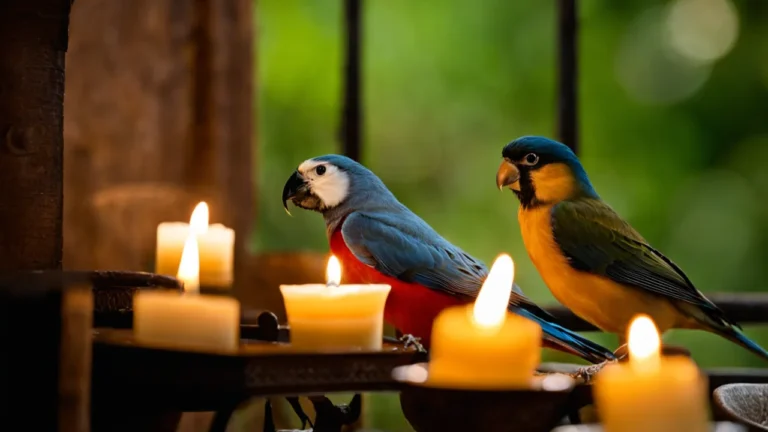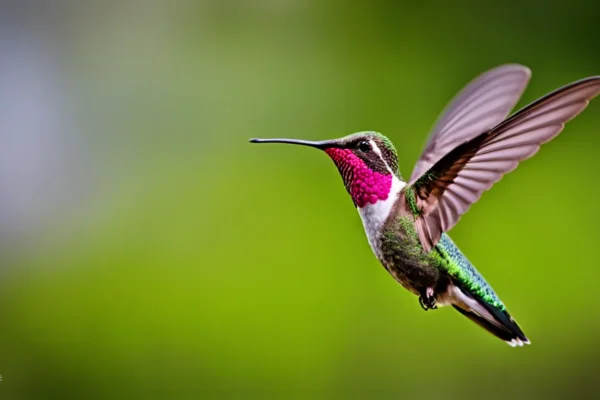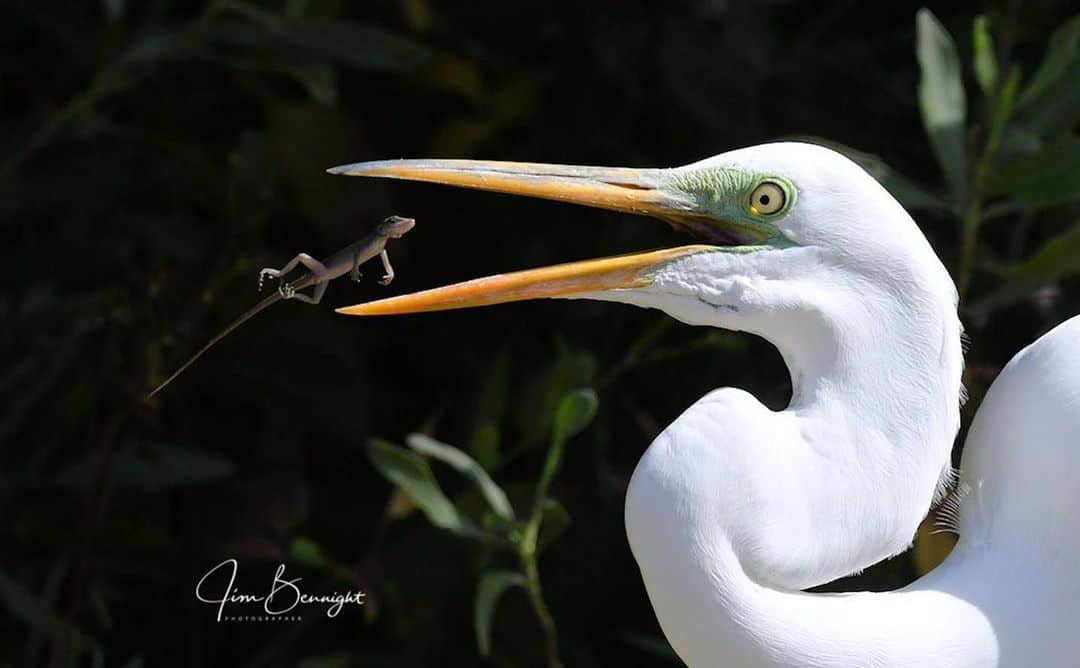Candles, celebrated for their warm glow and enticing fragrances, have become household staples. Despite their popularity, these seemingly harmless additions can pose significant threats to the health of our feathered companions, ranging from respiratory issues to potential ingestion dangers. In this extensive guide, we embark on a comprehensive exploration of candle safety concerning our avian friends, providing in-depth insights into the specific respiratory, toxicity, and burn risks associated with different candle types. Our mission is to empower bird enthusiasts with bird-safe practices, ensuring they can relish the ambiance of candles without compromising the well-being of their beloved avian companions.
Understanding the Hazards of Candle Smoke and Fumes
While candles contribute to a cozy and relaxing atmosphere, their allure conceals potential health risks for our feathered friends. Birds, equipped with highly sensitive respiratory systems, are particularly vulnerable to the smoke and fumes released during the burning of candles.
The Delicate Nature of Avian Respiratory Systems
Birds boast unique respiratory systems designed for efficient oxygen extraction from the air. However, these intricate systems also render them more susceptible to airborne pollutants, a vulnerability stemming from the small size of their air sacs and their elevated metabolic rates. The inhalation of candle smoke can lead to respiratory distress, marked by symptoms such as coughing, wheezing, sneezing, and difficulty breathing. In severe cases, it might progress to respiratory infections or other diseases.
Particulates and Perils of Toxic Air Pollutants
Candle smoke comprises particulate matter, including soot and tiny ash particles, along with toxic air pollutants. These elements are often the result of incomplete combustion or the use of subpar candle materials. When birds inhale these particles and pollutants, they accumulate in their respiratory systems, causing gradual but potentially severe damage. Research emphasizes that particulate matter in candle smoke can trigger inflammation in the respiratory tract, compromise oxygen exchange, and undermine overall respiratory function. Furthermore, toxic compounds like benzene and formaldehyde, prevalent in candle fumes, can exacerbate respiratory problems in birds.
Navigating the Risks of Essential Oils and Fragrances
Many candles enhance their appeal with essential oils or synthetic fragrances. While these scents might be pleasing to humans, they can prove harmful to birds. Birds possess a highly developed sense of smell, and the potent scents emitted by candles can overwhelm their delicate olfactory systems. Certain essential oils and fragrances may contain volatile organic compounds (VOCs) capable of irritating a bird’s respiratory system. In particular, oils like tea tree or eucalyptus, if ingested or inhaled in concentrated amounts, can be toxic to birds. To create a fragrant ambiance without jeopardizing your pet birds, opting for flameless candles or diffusers utilizing water-based essential oils is a prudent choice.
For additional information on the hazards of candle smoke and fumes for birds, you can explore The Spruce Pets website.
Mitigating Ingestion and Burn Hazards
Beyond respiratory concerns, candles pose two primary risks for birds: ingestion and burns. Bird owners must remain vigilant and implement necessary precautions to ensure the safety of their avian companions.
Candle Wax Toxicity upon Ingestion
Birds, inherently curious creatures, might be drawn to colorful and aromatic candles. However, ingesting candle wax, especially from certain types like paraffin wax, can be toxic and harmful to their health. The chemicals in these candles can lead to digestive issues, respiratory problems, and even organ damage. It is imperative for bird owners to keep candles out of their pets’ reach and prevent any chewing or ingestion of wax. If there are suspicions of ingestion or signs of illness, prompt consultation with a veterinarian is strongly advised.
Guarding Against Burns from Open Flames
The allure of open flames in candles can entice birds to fly too close, resulting in singed feathers or severe burns. Such injuries are painful and may necessitate immediate medical attention. Preventive measures include placing lit candles in areas inaccessible to birds, employing enclosed holders, or opting for flameless candles. These alternatives provide the desired ambiance without the associated risk of burns.
Preventing Access to Lit Candles
One of the most effective strategies for protecting birds from candle hazards is to limit their access to lit candles. This can be achieved by placing candles in areas that are inherently inaccessible to birds, such as closed rooms or behind glass barriers. Additionally, supervising birds during free-roaming moments and ensuring they do not fly near lit candles can minimize accident risks. Providing alternative sources of entertainment, such as toys, and designating play areas away from candles can redirect their attention and further reduce the likelihood of accidents.
Understanding the Varied Risks of Different Candle Types
The type of candle chosen significantly influences the associated health risks for birds. Factors such as scent, material, and flameless alternatives play pivotal roles in mitigating potential hazards.
Scented vs. Unscented Candles
The health risks associated with candles are influenced by whether the candle is scented or unscented. Scented candles often contain fragrances created using various chemicals. These chemicals can release volatile organic compounds (VOCs) into the air during combustion. Birds, similar to other animals, can be sensitive to these VOCs, leading to respiratory irritation and potential health issues. Consequently, when birds are present, opting for unscented candles is generally recommended to minimize risks.
Paraffin, Soy, and Beeswax: Materials Matter
The material from which a candle is made plays a crucial role in determining its potential health risks for birds. Paraffin candles, derived from petroleum byproducts, have been shown to release chemicals like toluene and benzene when burned, posing potential harm to both humans and animals. On the contrary, soy candles and beeswax candles are often considered more environmentally friendly options. Crafted from natural materials, these candles emit fewer harmful chemicals when burned. Choosing soy or beeswax candles can contribute to reducing health risks for birds and other pets in the home.
Embracing Flameless Alternatives
An alternative to traditional candles comes in the form of flameless candles. These candles employ LED lights or batteries to create a realistic flame-like effect without the actual flame. Flameless candles offer a safe option for households with pets, including birds, as there is no risk of fire or harmful emissions. Beyond safety, they provide the desired ambiance of traditional candles without compromising the well-being of avian companions. Flameless candles are particularly suitable for households with children or those who prefer a worry-free candle experience.
Prioritizing Bird Health and Safety in the Home Environment
Creating a safe living environment for pet birds involves considering various factors, ranging from cage placement and ventilation to adopting bird-safe alternatives to traditional candles.
Cage Placement and Ventilation Considerations
The location of a bird’s cage is pivotal in ensuring its overall well-being. Placing the cage away from potential hazards such as drafty windows, direct sunlight, and areas with high air pollution levels helps prevent respiratory issues and stress-related illnesses. Adequate ventilation is equally crucial for maintaining a healthy environment. Placing the cage in a well-ventilated area, while considering temperature fluctuations, strikes a balance between fresh air and a comfortable living temperature. Given birds’ sensitivity to temperature extremes, this balance is essential for their health and well-being.
Exploring Bird-Safe Candle Alternatives
While traditional candles may contribute to a cozy atmosphere, they also pose risks to birds due to harmful emissions. The burning of candles releases substances like soot, smoke, and volatile organic compounds (VOCs) into the air. Birds’ highly sensitive respiratory systems increase their susceptibility to these pollutants. Instead of traditional candles, opting for bird-safe alternatives such as LED candles or essential oil diffusers is a prudent choice. These alternatives offer the desired ambiance without compromising air quality. Additionally, incorporating natural air purifiers like indoor plants can further improve the living space for pet birds.
Emergency Preparedness for Bird Owners
Preparedness for emergencies is paramount for ensuring the safety and well-being of pet birds. Having a plan in place for power outages, natural disasters, or unforeseen events is essential. This plan should encompass a backup power source for critical equipment like heaters and air purifiers, along with a designated safe space where birds can be temporarily relocated if necessary. Maintaining an emergency kit stocked with essentials such as food, water, medication, and a first aid kit is advisable. Familiarizing oneself with avian emergency procedures and having the contact information for an avian veterinarian readily available enhances the ability to respond effectively to unforeseen situations. Taking these proactive measures contributes significantly to creating a secure and healthy environment for pet birds.
Recognizing Signs of Candle Injury in Birds
While candles enhance the home environment, they can potentially pose health risks to birds. Bird owners must be vigilant and recognize signs of candle-related injuries in their feathered companions, taking prompt action to ensure their well-being.
Symptoms of Respiratory Distress
Birds, with their highly sensitive respiratory systems, can exhibit signs of respiratory distress when exposed to candle smoke. Common symptoms include coughing, wheezing, sneezing, labored breathing, open-mouth breathing, and decreased activity or lethargy. If any of these symptoms are observed, it is crucial to remove the bird from the area with the candle immediately, providing access to fresh air. Persistent or worsening symptoms necessitate consultation with a veterinarian.
Gastrointestinal and Neurological Effects of Ingestion
Ingesting candle wax or components can result in gastrointestinal and neurological effects in birds. Warning signs include vomiting or regurgitation, diarrhea or changes in droppings, tremors or seizures, and loss of coordination. Suspected ingestion of candle material requires immediate contact with a veterinarian, who can offer guidance on necessary steps and may recommend bringing the bird in for examination.
Burn Injuries and Emergency Care
Direct contact with lit candles can lead to burn injuries in birds, evidenced by singed feathers or skin, blisters, open wounds, swelling, or redness. In the event of a burn, seeking emergency care is paramount. While attempting to cool the affected area gently with water is advisable, using ointments or creams without veterinary guidance is cautioned, as they may be toxic to birds. Prevention remains a key aspect of protecting birds from candle-related injuries, making flameless candles or alternative light sources an attractive choice for safety-conscious bird owners.
Final Thoughts
While candles add a captivating ambiance, they harbor potential inhalation and ingestion hazards for birds. Vigilance and stringent safety practices are imperative for pet owners to ensure the well-being of their avian companions. By comprehending the mechanisms behind candle-related injuries, bird keepers can implement informed precautions and embrace alternatives, thereby preserving health while relishing the charm of candlelit environments. With knowledge and bird-centric adaptations, homes can effortlessly combine bird safety with aesthetic beauty, creating spaces that are both secure and visually appealing.





